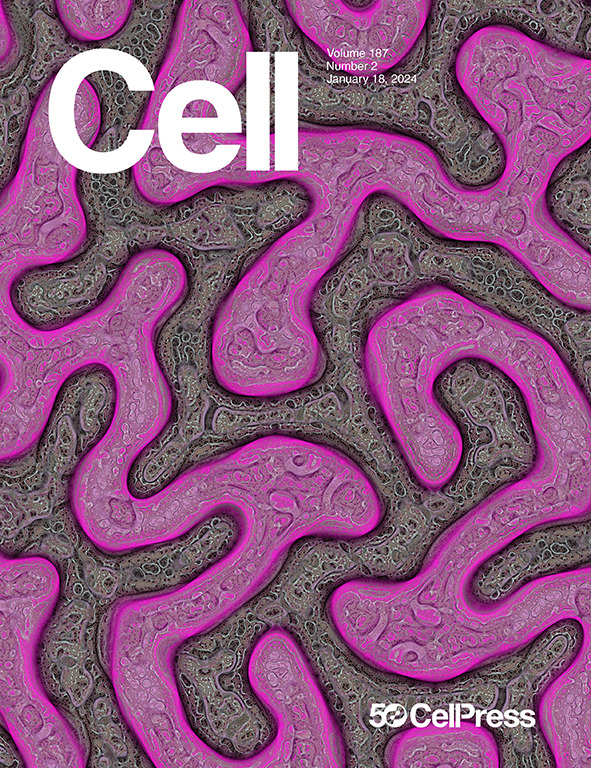High-speed mapping of whole-mouse peripheral nerves at subcellular resolution
IF 45.5
1区 生物学
Q1 BIOCHEMISTRY & MOLECULAR BIOLOGY
引用次数: 0
Abstract
In contrast to the rapid advancements in mesoscale connectomic mapping of the mammalian brain, similar mapping of the peripheral nervous system has remained challenging due to the body size and complexity. Here, we present a high-speed blockface volumetric imaging system with an optimized workflow of whole-body clearing, capable of imaging the entire adult mouse at micrometer resolution within 40 h. Three-dimensional reconstruction of individual spinal fibers in Thy1-EGFP mice reveals distinct morphological features of sensory and motor projections along the ventral and dorsal rami. Immunostaining facilitates body-wide mapping of sympathetic nerves and their branches, highlighting their perivascular patterns in limb muscles, bones, and most visceral organs. Viral tracing elucidates the fine architecture of vagus nerves and individual vagal fibers, revealing unexpected projection routes to various organs. Our approach offers an effective means to achieve a holistic understanding of cellular-level interactions among different systems that underlie body physiology and disease.

亚细胞分辨率下全鼠周围神经的高速制图
与哺乳动物大脑中尺度连接组图谱的快速发展相比,由于其体型和复杂性,周围神经系统的类似图谱仍然具有挑战性。在这里,我们提出了一种具有优化的全身清除工作流程的高速块面体积成像系统,能够在40小时内以微米分辨率对整个成年小鼠进行成像。Thy1-EGFP小鼠单个脊髓纤维的三维重建显示了沿腹侧和背侧分支的感觉和运动投射的明显形态学特征。免疫染色有助于交感神经及其分支在全身范围内的定位,突出其在肢体肌肉、骨骼和大多数内脏器官的血管周围模式。病毒追踪阐明了迷走神经和单个迷走神经纤维的精细结构,揭示了意想不到的投射到各种器官的路线。我们的方法提供了一种有效的手段,以实现对不同系统之间的细胞水平相互作用的整体理解,这些系统是身体生理和疾病的基础。
本文章由计算机程序翻译,如有差异,请以英文原文为准。
求助全文
约1分钟内获得全文
求助全文
来源期刊

Cell
生物-生化与分子生物学
CiteScore
110.00
自引率
0.80%
发文量
396
审稿时长
2 months
期刊介绍:
Cells is an international, peer-reviewed, open access journal that focuses on cell biology, molecular biology, and biophysics. It is affiliated with several societies, including the Spanish Society for Biochemistry and Molecular Biology (SEBBM), Nordic Autophagy Society (NAS), Spanish Society of Hematology and Hemotherapy (SEHH), and Society for Regenerative Medicine (Russian Federation) (RPO).
The journal publishes research findings of significant importance in various areas of experimental biology, such as cell biology, molecular biology, neuroscience, immunology, virology, microbiology, cancer, human genetics, systems biology, signaling, and disease mechanisms and therapeutics. The primary criterion for considering papers is whether the results contribute to significant conceptual advances or raise thought-provoking questions and hypotheses related to interesting and important biological inquiries.
In addition to primary research articles presented in four formats, Cells also features review and opinion articles in its "leading edge" section, discussing recent research advancements and topics of interest to its wide readership.
 求助内容:
求助内容: 应助结果提醒方式:
应助结果提醒方式:


